Using Suet Plugs With Log Feeders
We get a lot of questions about suet plugs and log feeders. Today I'll try and give you some of my thoughts on what works for me.
Why Plugs?
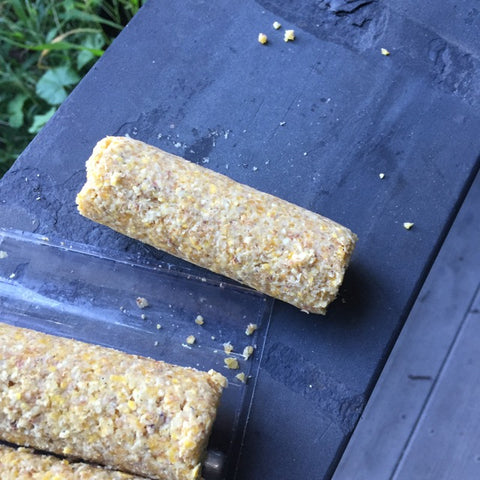
A plug feeder is what you'd call a selective feeder, not every bird will be able to use it. A log feeder is made for clingers, birds that cling to trees and typically move up and down the vertical surfaces of trees vs just hanging out in the branches. If you have a regular suet feeder that has a lot of traffic, or is frequented by larger birds a plug feeder can give nuthatches and downy woodpeckers their own little space in your yard.
A Round-ish Plug in a Round Hole
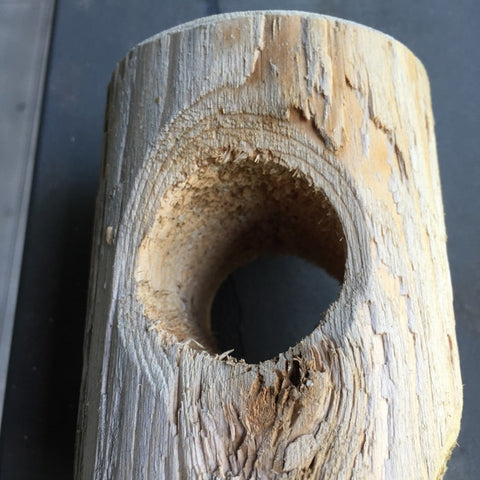
The number one question/comment we get about the log feeder is about the hole size. It goes normally something like "Hey I bought this feeder from you, and the plugs from, you and they don't fit. They just fall right out." What's up with that?? 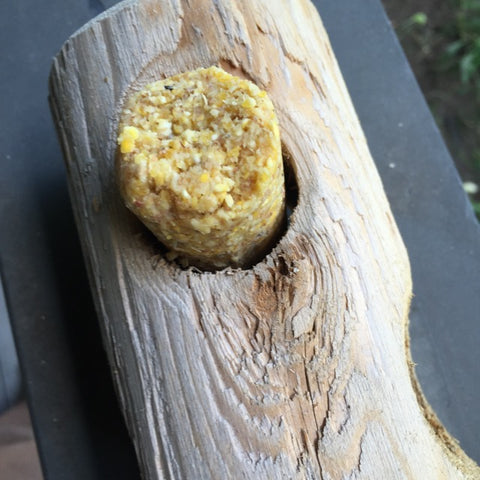
A Suet Plus Insects & Nuts Plug in a Small Stovall Log Feeder
It mostly has to do with flexibility, from the standpoint of the guys making the feeder it's always better to have a hole that's too big vs too small. Especially since there can be a big difference in plug sizes and shapes. Which leads us to...
Pack & Play
How do you keep the suet in the log, just give it a squeeze. What I usually do is center the plug in the log, then take a piece of cling wrap and wrap it around one side just enough to cover the plugs, like so..(you could also just wear gloves)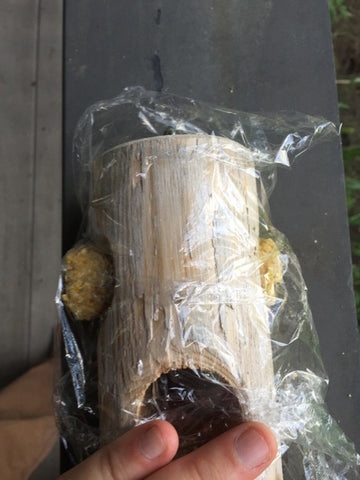
Then I take it with both hands and give it a good squeeze.
Imagine both hands in that picture, I didn't have (anyone to take the photo for me... ) When you're done you've got something that looks like this.
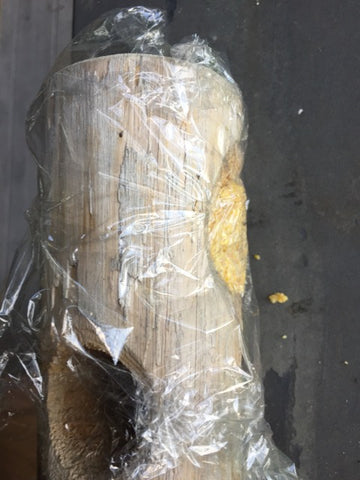
LogJammin'
And to further my point about plugs and hole size, here's a Pine Tree Farms log jammer plug. They come in three to a package, and are basically made just like a suet cake. The only difference, is that the tray is the mold for the plugs, so they're flat on one side which gives them a sort of D shaped profile. 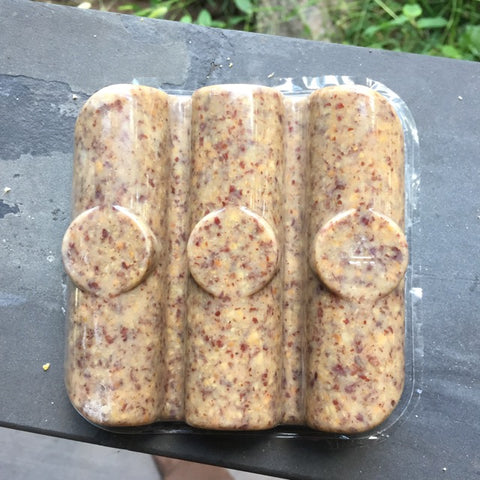
The easy way to get them out of the tray is to give it a fold..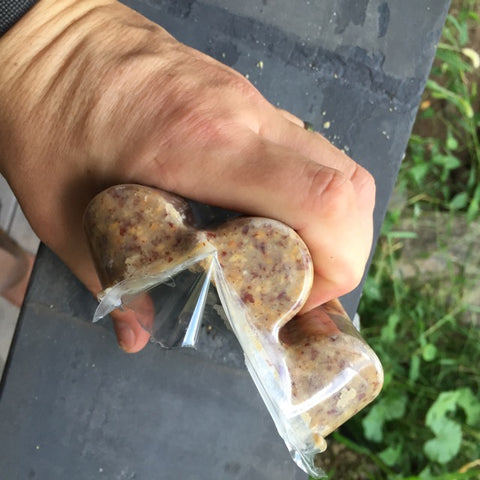
Since it's not completely round it will take a slight bit of effort to get it in the hole.

(Hey that's my foot.. ) Anyways, give it a push and you end up with this...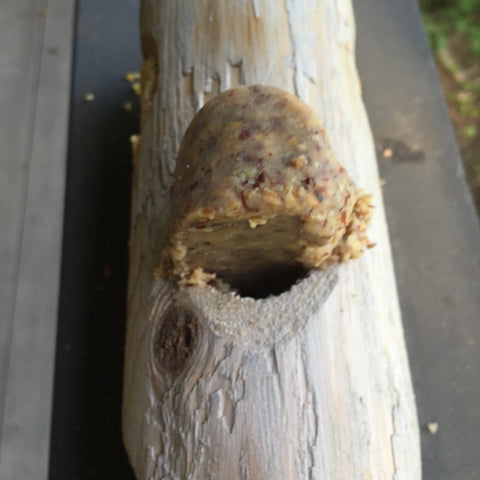
As you can see a bit of the sharp corners on the D shape scrape off.. No big deal, if some of it actually falls off I'll usually just stuff it in the hole, and then go about doing the same thing we did above. 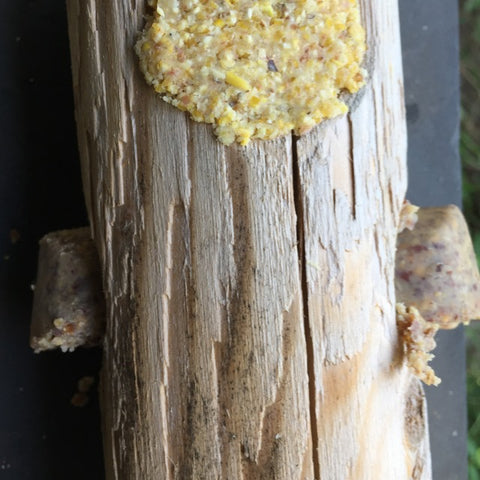
Center the Plug in the log
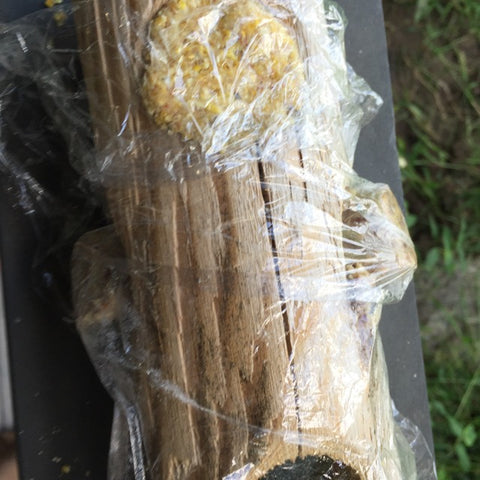
Wrap it...

Squeeze it, and you're done.
Stick a Plug in It
To sum it all up, you're always better off to have a feeder with too big of a hole vs too small. Packing the suet in the log takes a pretty minimal effort. If I wasn't chasing a 19 month old around the yard while trying to take pictures this whole thing would've literally taken 2 minutes, vs the 35-ish it took me. I know I didn't cover everything here, but hopefully it's enough to cover the basics. If you have any questions you can use the contact form, ask us on twitter or facebook.
2 Responses
Lynn B. Spees
This is useful, well-presented information. I had felt that using Pine Tree Farms plugs was like putting a square peg into a round hole. I did scoop up the scraped-off edges and pack them into the holes. The messiness and lack of convenience in placing them is probably made up for by the quality of the plugs.








Rochelle
January 03, 2020
I just buy the normal square suet (since it is much cheaper), break if off into pieces and squish into the holes. If I’m lucky I get a long rod shaped thing, but even triangles will just squish in. I like the saran wrap or glove idea though. I’d been using my hands which get very greasy, although Dawn dish soap takes care of it.